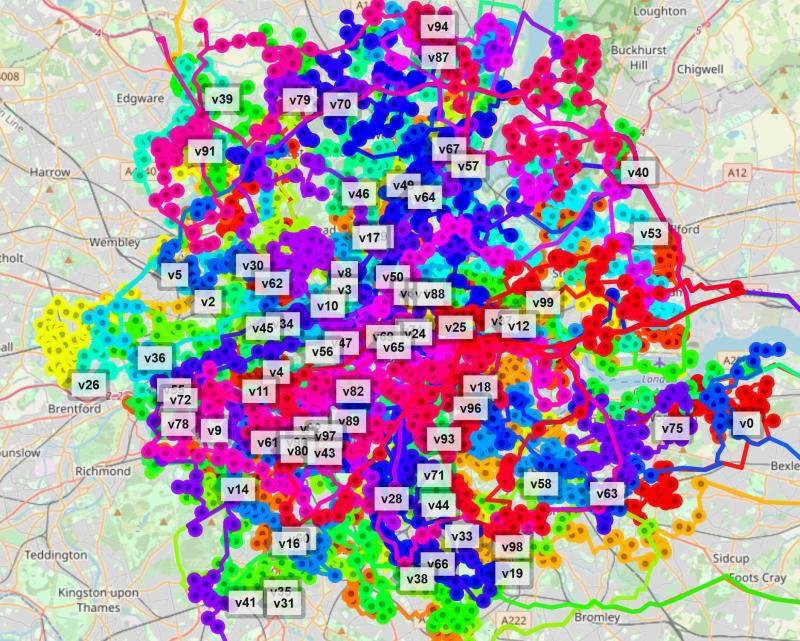I am a researcher in vehicle routing, and my answer is based on my experience as a researcher, conversations with practitioners and consultants, and seminars and conference talks I have attended.
You make a very interesting observation: solving VRP's to optimality is currently only possible for hundreds of customers, while problems in practice are significantly bigger. However, there are several ways how exact methods (methods that guarantee optimality) have an impact on the industry.
Splitting the problem
If a problem is too difficult to solve at once, it may be split into more manageable parts. One way to do this is by solving parts of the problem sequentially, at the cost of losing guaranteed optimality. Each sequential problem might be small enough to be solved exactly, or is at least easier to solve with heuristics. This approach was used for optimizing the timetable of the Dutch Railways, for example. To quote from The New Dutch Timetable: The O.R. Revolution:
To construct a new timetable and its related resource schedules, we modeled and solved a sequence of planning problems. As input, we had to define a linesystem. Then, we calculated the timetable, including the detailed routings through the stations. Finally, we needed to construct rolling-stock and crew schedules. Note that we solved these different planning problems sequentially.
Another way to split problems is by splitting them geographically. This is an approach that is used by some grocery deliverers for example. After dividing the service area into regions, each region is optimized independently. If the regions are sufficiently small, exact methods may be used.
Heuristics
Even if exact methods are computationally infeasible, they often serve as a starting point for developing heuristics. It is very common (especially in the scientific literature) to first present the problem as a mixed integer program, even if it will not be solved as such.
Exact methods provide a way to evaluate the performance of heuristics for small problems that can be solved to optimality. This provides some confidence that a heuristic provides good solutions.
In industry, heuristics are a lot more common than exact methods. It should be noted however, that there is also a lot of research into heuristic methods. In my experience, local search methods, e.g., variable neighborhood search, are common for vehicle routing problems. Some consultants and companies are actively involved in research, typically with a focus on heuristics. For example, I attended a talk by Mauricio Resende, Principal Research Scientist at Amazon, who talked about routing problems at Amazon at a scientific conference.
Some heuristics are based on exact methods. Such heuristics are often referred to as matheuristics. For example, one may remove all arcs that are unlikely to appear in an optimal solution, and solve the remaining problem exactly. Another example is heuristics based on column generation, where only a subset of the columns is generated. Such heuristics are used for bus scheduling, for example.
Conclusion
In industry, you are unlikely to find complex problems that are solved to optimality. However, exact methods are still useful in practice. They can be used to solve subproblems, and they inspire matheuristics. Some companies are heavily involved in research, but their interest is typically more in heuristic methods, which is a research area in itself.

